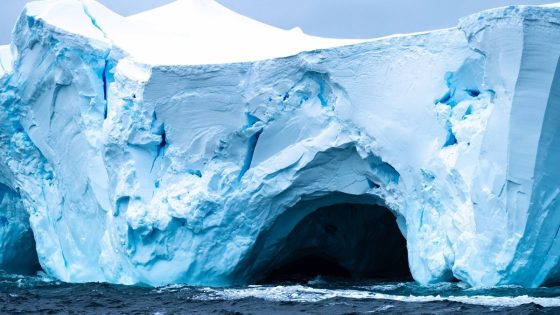In what could be a catastrophic event, the largest ice shelf in Antarctica shakes at least once or twice every day. Scientists found that the entire Ross Ice Shelf is moved out of place by ice streams on a daily basis.
Ross Ice Shelf is the largest ice shelf in Antarctica, about the same size as the country of France. It is located in the Ross Sea and extends into the Southern Ocean. The ice shelf is named after British explorer Sir James Clark Ross, who discovered it in the 19th century.
“We found that the whole shelf suddenly moves about 6 to 8 centimetres (or 3 inches) once or twice a day, triggered by a slip on an ice stream that flows into the ice shelf,” said Doug Wiens, lead author of the paper, published in the Geophysical Research Letters.
Scientists are intrigued by the interactions between ice shelves and ice streams, particularly due to concerns about the stability of Antarctica’s ice shelves in a warming climate.
Ice shelves serve as impediments for glaciers and ice streams, impeding their path to the ocean where they ultimately melt. This process facilitates the accumulation of more ice on the continent. However, if an ice shelf were to collapse, this support mechanism would vanish, allowing glaciers to accelerate their flow towards the ocean. Consequently, their contribution to sea level rise would increase.
The movement is triggered by a phenomenon called the slip event, which is similar to what faultlines underneath Earth experience before and during an earthquake.
The team observed that a large section of the Whillans Ice Stream, measuring more than 100 km by 100 km, remains stationary while the rest of the ice stream creeps forward. Studies of ice streams over the past 50 years show some ice streams speeding up, and others slowing down. Scientists can use seismographs to detect the sudden motion of the ice streams to help understand what controls this motion.
The velocity of these elastic waves is about 10,080 kmph, as expected for guided plate waves moving in an ice shelf. During the passage of these elastic waves, the entire ice shelf with an area of 5,00,000 square kilometres is displaced about 60 mm in a direction away from the Whillans Ice Stream.
Scientists concluded that this massive strain on the ice shelf is enough to “trigger ice quakes and perhaps enhance the deformation of the ice shelf.”
Source Agencies




